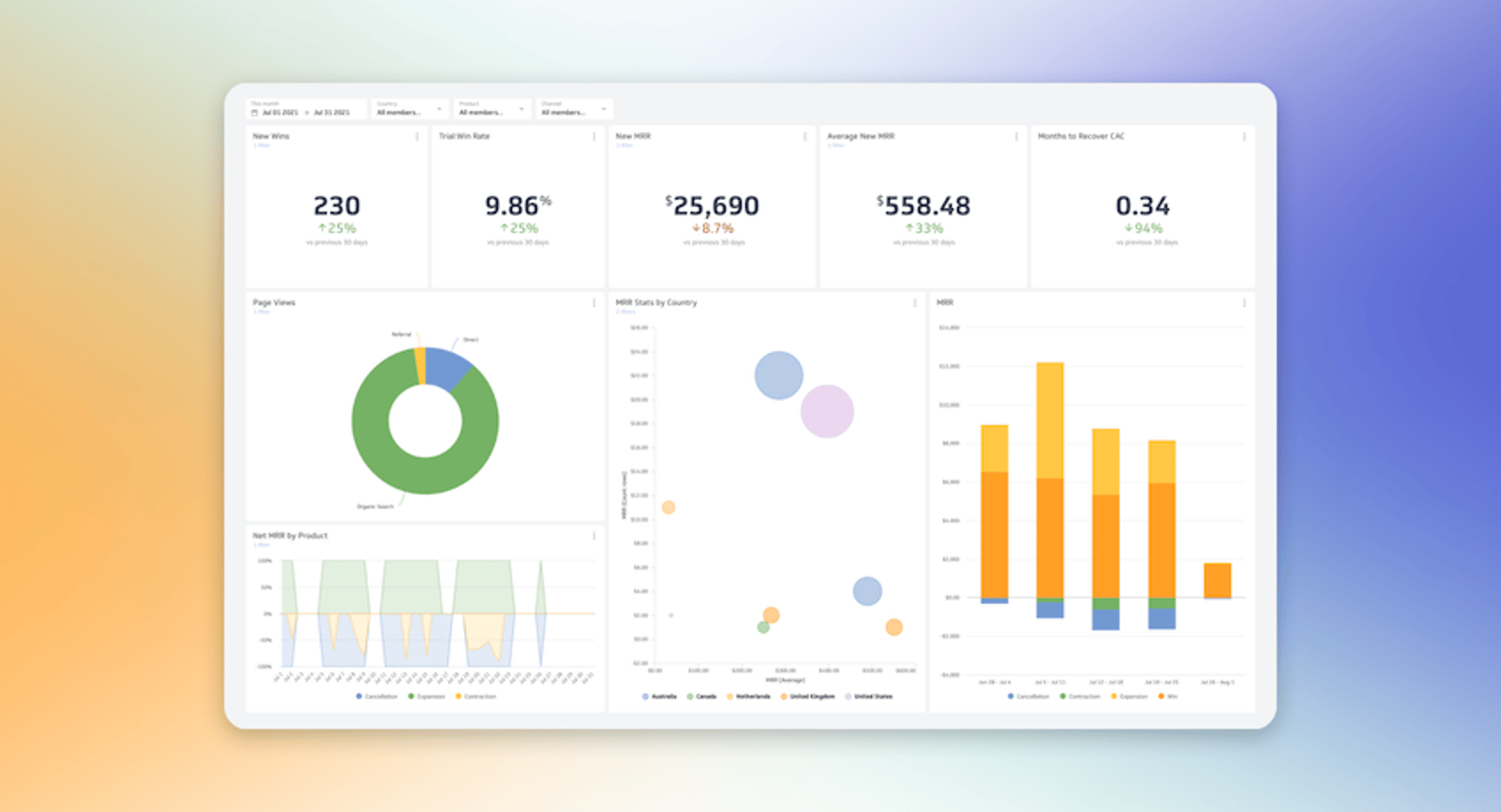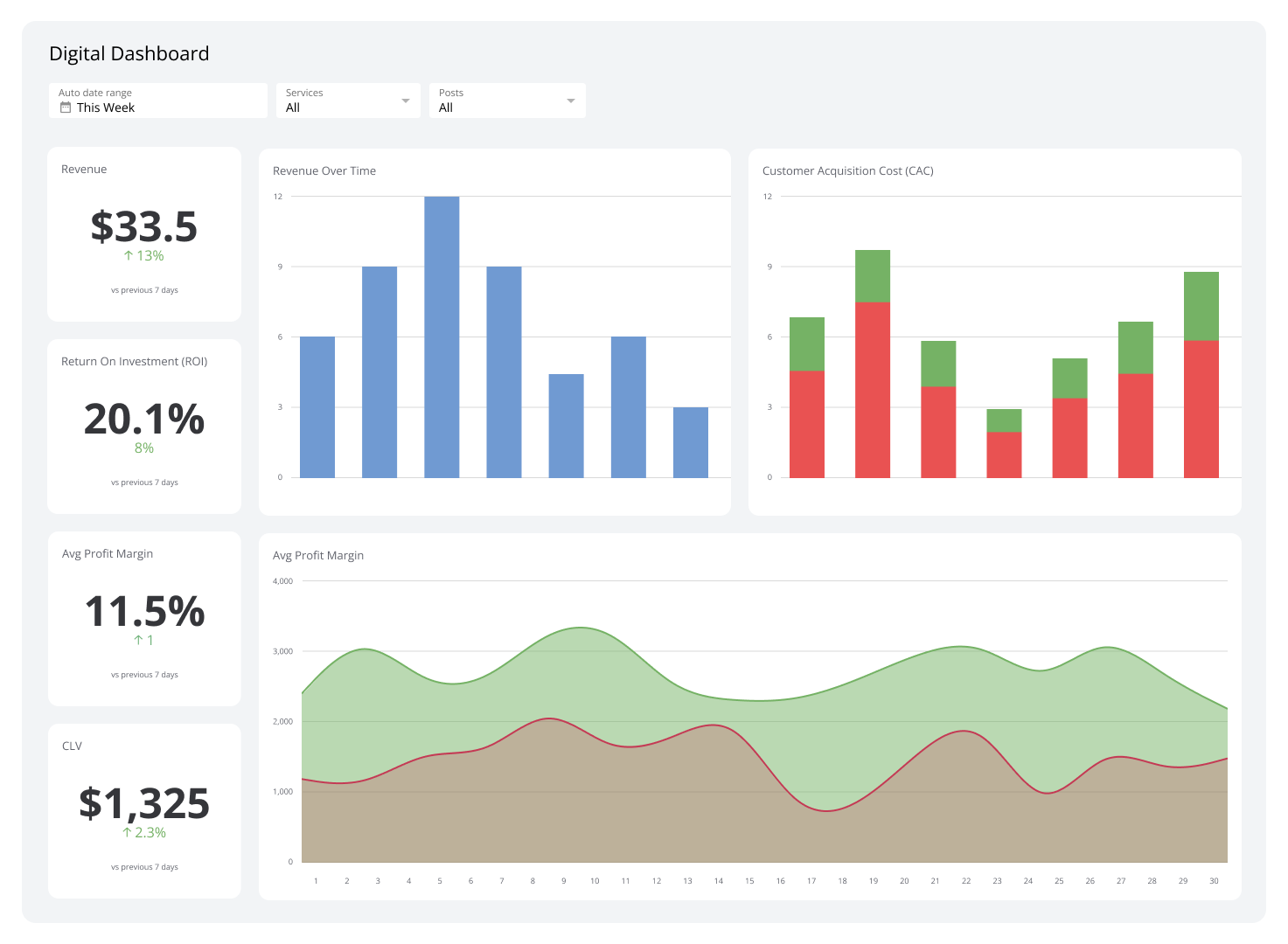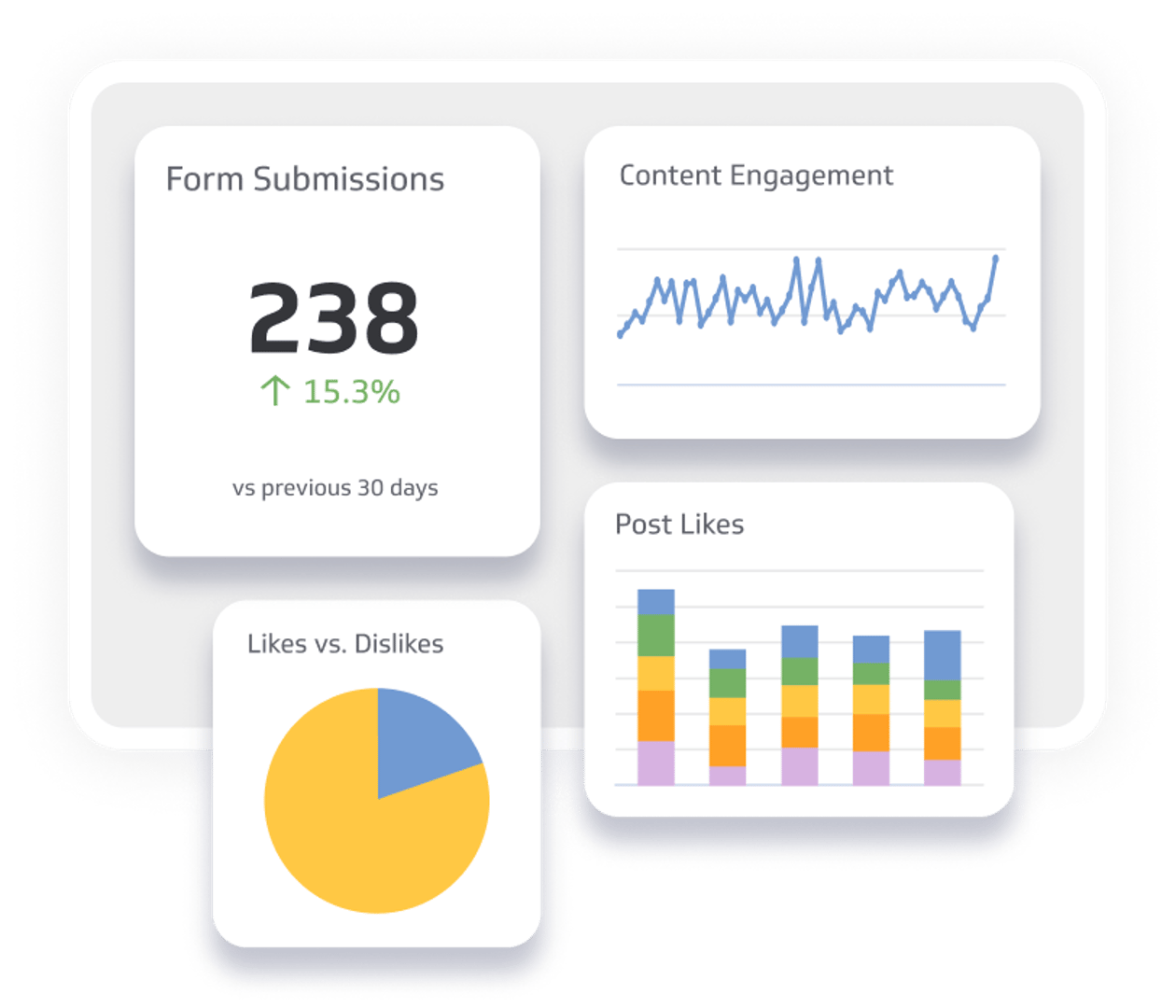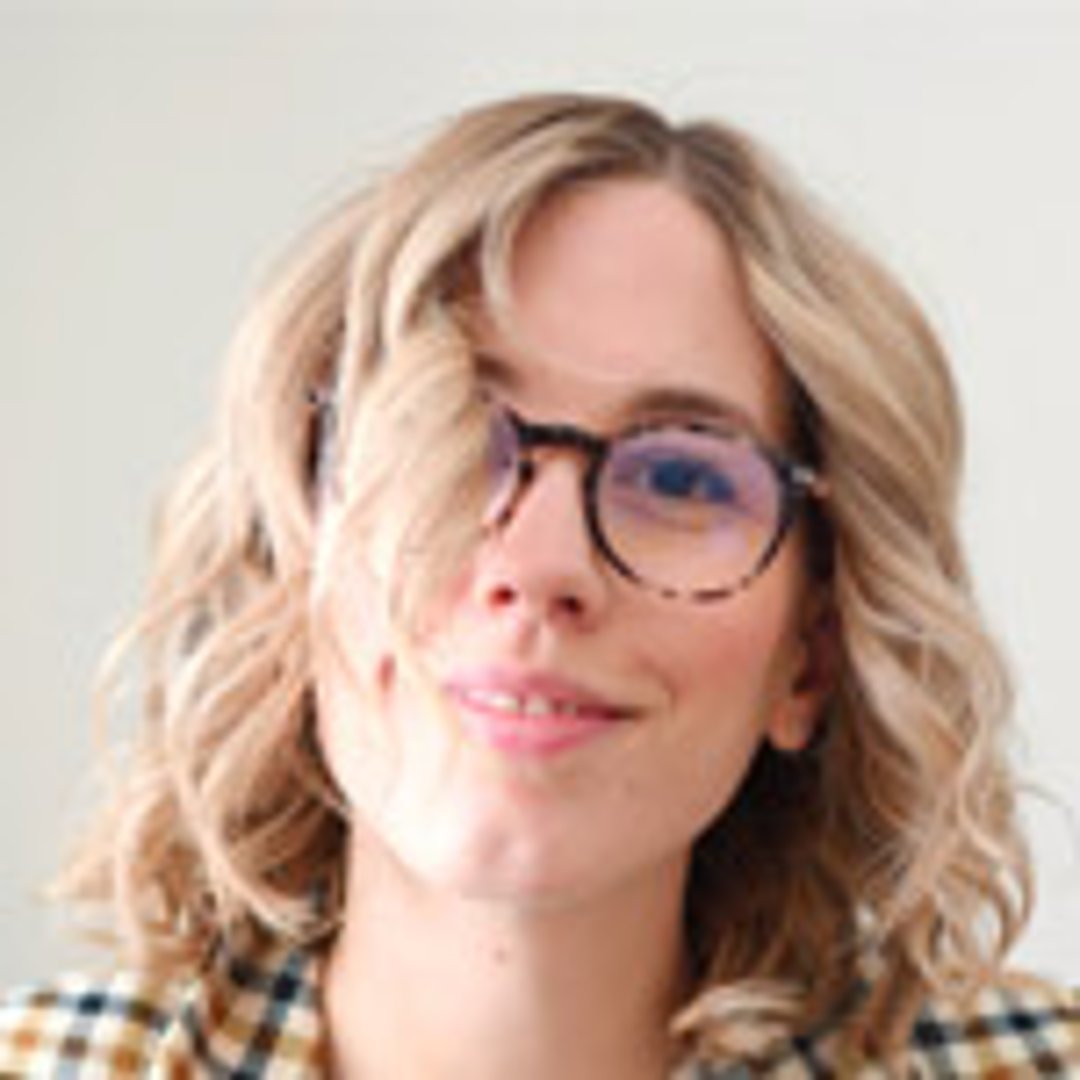What is a data dashboard?

Published 2025-10-23
Summary - Learn what a data dashboard is, how it works, key types, and examples. See best practices to build dashboards your team will use with Klipfolio Klips.
A data dashboard is an interactive tool that’s designed to give you a clear and concise way to see important data at a glance. The dashboard collects and organizes data from various sources and displays it in visualizations like bar charts, line graphs, and tables.
This way, you can quickly understand trends and metrics that are critical to your business.
These dashboard tools are important for modern business owners like you since they enable you to make informed decisions based on real-time data. With a data dashboard, you can stay updated on key metrics and respond quickly to changes in your business environment.
Let’s explore the benefits you can get from data dashboards, understand how they work, check out some examples, and learn the dos and don’ts when making a dashboard so you can use them better.

Key benefits of using data dashboards
The main advantage of using data dashboards is being able to stay on top of KPIs and metrics (no matter the source) at a glance. But why is this important? Here are three reasons:
Valuable insights from big data
With their ability to consolidate data from multiple sources, data dashboards can let you see the bigger picture. They help visualize complex data in an easy-to-understand format. A dashboard makes it easier for you to identify trends, patterns, and outliers in your data.
Faster and better decisions
Data dashboards also enable you to make faster and better decisions with real-time data access. You no longer have to wait for periodic reports to understand your business's data and performance.
Instead, you can access up-to-date data whenever you need it. This agility helps you respond quickly to opportunities and challenges.
Improved forecasting
These dashboard tools can improve forecasting by analyzing historical and current data. Dashboards can help you predict future trends and outcomes.
As such, you can make more accurate forecasts, mitigate risks, and identify opportunities for growth. Forecasting features in dashboards provide you with a practical tool for planning and strategy.
How do data dashboards work?
As mentioned, data dashboards consolidate data from multiple sources to provide a comprehensive view of your business metrics. This means you can pull data from various databases, spreadsheets, and applications into one central location.
These are the steps involved:
- Data collection: The data dashboard collects data from sources such as sales databases, customer relationship management (CRM) systems, marketing tools, and financial software.
- Data integration: This stage involves combining data from different sources into a single repository, the dashboard, and making sure that they’re compatible so that different data sets can be analyzed together.
- Data cleaning: This is where data is checked and corrected for errors, inconsistencies, or duplicates for accurate data analysis.
- Data transformation: It involves aggregating data, calculating metrics, and creating new data fields to convert raw data into a format that is suitable for analysis and visualization. For instance, you might calculate monthly sales totals or average customer satisfaction scores from raw data.
- Data visualization: This step involves selecting the appropriate charts, graphs, and tables to represent your data.
- Data customization: The final stage is where you can tweak the layout, colours, and styles to match your preferences and make the dashboard more user-friendly.
Types of data dashboards
Understanding the types can help you choose the right data dashboard for your needs. Here are the four main types of data dashboards:

Operational dashboards
Operational dashboards help you monitor the day-to-day activities of a business. They provide real-time data that helps you track and manage your ongoing operations efficiently. With this dashboard, you can identify immediate issues and keep your business running smoothly.
These dashboards typically display data such as production levels, customer service response times, and sales numbers. They give users a clear view of current performance, allowing quick decisions to be made when necessary.
Analytical dashboards
Analytical dashboards are used for deeper data analysis, helping users examine large sets of data to identify patterns, trends, and insights. Data analysts and managers typically use these dashboards since they need to understand the underlying reasons behind business performance.
An analytical data dashboard allows users to drill down into the data, providing a thorough view of what’s happening and why. This type of dashboard is essential for planning and decision-making that’s backed by hard data.
Strategic dashboards
Strategic dashboards are designed for long-term planning and high-level decision-making. They provide a big-picture view of an organization's performance against its goals and objectives. Senior executives and top-level management are the primary users of these dashboards.
A strategic data dashboard focuses on key performance indicators (KPIs) that align with the company’s strategic goals. They often feature data such as revenue growth, market share, and customer satisfaction.
These dashboards help leaders assess whether the organization is on track to meet its long-term objectives and identify areas that may need adjustment.
Informational dashboards
Lastly, you use informational dashboards to share specific sets of data with a broader audience. They provide an overview of important data in a clear and accessible way. These dashboards are often used for presentations and reports.
An informational data dashboard might display metrics like overall sales performance, website traffic, or customer demographics. The goal is to present data in a straightforward manner that is easy for people to understand.
These dashboards often include various types of visualizations to make the data more engaging and easily digestible.

Examples of data dashboards
Data dashboards can be used in any department and industry. Let’s take a look at the different examples of these data tools:
Business dashboards
A business data dashboard helps you track, analyze, and display key business metrics. It’s used in various departments such as sales, marketing, finance, and operations to monitor KPIs, track progress, and make informed decisions.
A management KPI dashboard is an example of a business dashboard. It provides a high-level view of metrics, such as revenue, profit margins, customer acquisition cost, and employee performance. With a management KPI dashboard, you can quickly assess the health of your business and identify areas that need improvement.
Executive dashboards
Executive dashboards are designed for high-level decision-makers such as CEOs, CFOs, and other senior executives. These dashboards help executives make informed strategic decisions through data visualization. Executive dashboards often include data on financial performance, market trends, and overall business health.
One of the top executive dashboards is the financial KPI dashboard. It includes metrics like revenue, expenses, profit margins, and cash flow. By tracking these KPIs on a dashboard, executives can make data-driven decisions to improve financial performance and achieve business goals.
KPI dashboards
KPI dashboards are designed to track specific indicators that are critical to your business objectives. For instance, a sales cycle length dashboard tracks the time it takes for a lead to move through your sales funnel and become a customer.
It includes metrics such as the average time to close a deal, the number of leads in each stage of the funnel, and the conversion rate. This way, you can identify bottlenecks in your sales process and improve efficiency.
Project dashboards
Project management dashboards are used to track the progress and status of various projects within your organization. These dashboards provide a centralized view of project timelines, milestones, and resource allocation, making sure that projects stay on track.
You can use a data dashboard to monitor the progress of IT projects, tracking metrics such as project timelines, budgets, resource allocation, and task completion. This dashboard helps project managers identify potential issues early and make data-driven decisions to keep projects on schedule and within budget.
Performance dashboards
Performance dashboards evaluate the overall performance of your business through key metrics. This type of dashboard displays metrics in areas such as operations, marketing, sales, and even warehouse order, helping you identify strengths and weaknesses.
A procurement data dashboard helps you track how well your business is performing in terms of sourcing and purchasing. This dashboard includes metrics such as supplier performance, cost savings, purchase order cycle time, and compliance rates to manage resources efficiently.
Website dashboards
Website dashboards monitor the performance of your website by tracking user behaviour, traffic sources, and conversions. These dashboards help you understand how visitors interact with your site and identify opportunities for improvement.
A specific example of website dashboards is a web analytics dashboard, which tracks metrics such as page views, unique visitors, bounce rate, and conversion rate. The data in this dashboard helps you identify trends in user behaviour, improve your website content, and improve user experience to increase engagement and conversions.
Industry-specific dashboards
There are also industry-specific dashboards that let business owners in any niche glean insights to meet their unique needs. Here are four examples of industry-specific dashboards:
Healthcare dashboards
Healthcare dashboards track metrics related to patient care, hospital performance, and operational efficiency. These dashboards help healthcare providers improve patient outcomes, reduce costs, and uphold compliance with regulatory requirements.
Marketing dashboards
Marketing dashboards monitor the performance of your marketing campaigns by tracking metrics such as ROI, lead generation, and conversion rates. Through data from marketing dashboards, you can improve your marketing strategies and improve campaign effectiveness.
Retail dashboards
Retail dashboards track metrics related to sales performance, inventory management, and customer behaviour. Sales trends, stock levels, and customer preferences are some of the important metrics you can display on retail dashboards. As a result, you make data-driven decisions to improve sales and customer satisfaction.
Sales dashboards
Sales dashboards monitor the performance of your sales team by tracking metrics such as sales revenue, lead conversion rates, and sales pipeline health. These dashboards help you identify top performers, improve sales processes, and achieve sales targets.
5 ways to make an effective data dashboard
It’s not enough to create a data dashboard. You have to make sure the dashboard communicates the key metrics and insights to the intended audience effectively. Here are five steps to do so:
1. Target specific audiences and goals
To create an effective data dashboard, start by defining your audience and goals. Knowing who will use the dashboard helps you tailor it to their needs.
Identify the main users of the dashboard and consider their level of expertise with data. For example, a dashboard for executives may focus on high-level KPIs that show the big picture, while one for analysts might include more detailed data.
Next, set clear objectives for the dashboard. Determine what you want to achieve, such as monitoring sales performance, tracking marketing campaigns, or managing project progress. Clear objectives guarantee that your dashboard remains focused and relevant.
2. Find the right data sources
Choose relevant data sources that provide accurate and up-to-date data for your dashboard. Also make sure the data you have is clean and accurate by validating and updating your dashboard regularly. Clean data reduces errors and makes sure your visualizations are reliable.
3. Know the right visualizations to use
Different types of data require different dashboard visualizations to be most effective. For instance, use line graphs to show trends over time and bar charts to compare different categories.
Additionally, avoid overcrowded and complex visualizations that can confuse people. Keep dashboard visualizations simple and focused to convey information clearly.
4. Make your dashboard view simple and consistent
Maintain simplicity and consistency in your dashboard design by using a consistent colour scheme and layout to make the dashboard easy to navigate. Avoid clutter in your dashboard by focusing on essential data and minimizing unnecessary elements. A clean and consistent dashboard enhances user experience and guarantees that key data stands out.
5. Keep enhancing the visualization
Collect feedback from users to identify areas for improvement. Seek input regularly from the dashboard’s main users to understand their needs and preferences. Using this feedback to make continuous enhancements based on user feedback ensures that the dashboard remains useful and relevant over time.
Common data dashboard mistakes to avoid
As you make and use your data dashboard, you have to be aware of the common mistakes that entail it.
Here are six dashboard mistakes to avoid:
Using inaccurate or incomplete data
Keep the data in your dashboard reliable by updating data sources regularly. Inaccurate or incomplete data can lead to incorrect conclusions and poor decision-making. Validate your data every time you update your dashboard to maintain its accuracy.
Overloading with too many visualizations
It can be tempting to cram as much information as you can into a single dashboard. But too many charts and graphs can overwhelm users and obscure important data. Keep dashboard visualizations simple and focused on key metrics to maintain clarity and effectiveness.
Not defining clear stakeholder needs and goals
Make sure the dashboard design matches stakeholder expectations. This is why you should define the needs and goals of the dashboard’s main users clearly so that the tool meets their requirements.
As mentioned, dashboards for executives may focus on high-level KPIs, such as revenue and overall performance. These visualizations may be best represented by bar or pie charts for quick insights.
On the other hand, dashboards for analysts might include more detailed data and complex visualizations to support in-depth analysis. As such, metrics or KPIs in their dashboard may be represented in chart types like scatter plots or heatmaps.
Ignoring dashboard design best practices
Follow dashboard design principles for clarity and usability. Incorporate interactive elements effectively, such as filters and drill-down features, to enhance user engagement. Good design practices make the dashboard more intuitive and user-friendly.
Focusing only on historical data
Include real-time and forecasting views to provide a comprehensive view of your data. Real-time data allows for quick responses to current trends, while forecast views help plan for potential outcomes.
Remember, balancing past, present, and future data views in your dashboard helps you make more informed decisions.
Making dashboards static
Make the most of your data dashboard’s dynamic features, such as drill-downs and filters, to make the dashboard interactive. Interactive dashboards allow users to explore data in different ways and gain deeper insights.
Your key to data-driven decisions
Data dashboards provide businesses with a clear and concise way to view and analyze data. They let you quickly grasp trends and patterns that are critical to your business through consolidated data from multiple sources.
Make the most of your business data with Klipfolio Klips. This dashboard and reporting software makes dashboard creation easy and intuitive. Get started for free today and see how easy it is to make data-driven decisions with real-time insights.
Related Articles

Klipfolio Partner How-To #1: Duplicating dashboards across client accounts
By Stef Reid — November 27th, 2025
17 KPIs Every Data-Driven Manager Needs to Lead Their Team
By Danielle Poleski — October 14th, 2025
7 ways to present KPIs that your management team will love
By Danielle Poleski — September 25th, 2025

